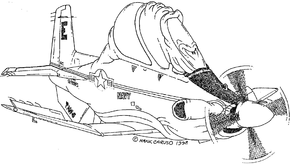Cargo capacity is only one factor, range and endurance I believe is a more critical component of the FAMC program, there’s nothing to say that C130 can carry the full load capacity of C295 but can do so for a further distance with a more variety of cargo such as smaller plant or light vehicles (Hawkie?)
If the RNZAF were to adopt a three tiered airlift model, then I could see a possible place for aircraft like the CN-235, C-295, or C-27J, covering the lowest tier the light/short-ranged tactical airlift requirement.
Given the distance of NZ from everything, a C-295 would have trouble reaching an island nation as part of a HADR operation with any amount of cargo. That in turn would mean flying mostly empty to whatever sort of FOB would be used, then operating from there with cargo being brought to the FOB by A400M aircraft or other means. A likely side effect of trying to utilize a hub-and-spoke type arrangement as indicated, is that the two aircraft suitable for supplying the hubs (the A400M's) would likely be insufficient for the task. More aircraft would be needed.
If the C-295's were to be utilized as a 'local' airlifter around NZ, similar to how the Andover's were used at times, that would be different. From my POV the viable choices for the tactical airlift role for NZ is either the C-130J, or possibly the A400M. The other contenders most frequently mentioned are IMO either too small and short-legged, or will not be ready and available for NZ in time.
The question then becomes what the strategic airlifter might be, which could be the A400M if the C-130J is selected as the tactical aircraft, or it might 2nd hand C-17's, or perhaps civilian airliners which are converted.
Again, IMO the purchase of a civilian airliner for use as a VIP transport does not make sense for NZ. The main capability it would provide NZ which would not be available via other transportation methods would be to stroke the ego of the VIP. After all, how often do NZ personnel attend diplomatic conferences or engage in trade negotiations where NZ has to send 100+ personnel to participate? Also having a fleet size of just a single aircraft is also practically begging for mission failures to occur, and/or missions to be aborted.

